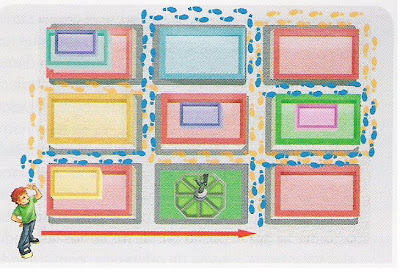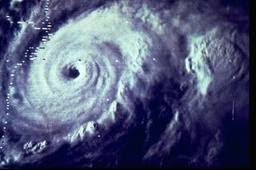Old word, new concepts
You have used words and phrases such as going fast, stopped, slowing down, speeding up, and turning provide a sufficient vocabulary for describing the motion of objects.
We will be expanding upon this vocabulary list with words such as distance, displacement, speed, velocity, and acceleration.
CLASS 01 SCALAR & VECTORS
Scalars are quantities that are fully described by a magnitude (or numerical value) alone.
Vectors are quantities that are fully described by both a magnitude and a direction.
Exercise 01 Consider the following quantities listed below. Categorize each quantity as being either a vector or a scalar.
a) 5 meters b) 30 m/sec, East c) 5 miles, North d) 20 degrees Celsius
e) 256 bytes f) 4000 Calories
CLASS 02 DISTANCE VS DISPLACEMENT
Distance and displacement are two quantities that may seem to mean the same thing yet have distinctly different definitions and meanings.
*Distance is a scalar quantity that refers to "how much ground an object has covered" during its motion.
*Distance can be defined as how far two objects are. Distance in physics may refer to physical length.
*Distance is the scalar path between two locations measured along path connecting them.
*Displacement is a vector quantity that refers to "how far out of place an object is"; it is the object's overall change in position.
*Displacement can be defined as shortest distance between the starting point and end point.
*Displacement can be defined as imaginary straight path which is different from the actual path.
In the figure you can see a rat and cheese. If the rat want the cheese it must follow the blue path. And the length of blue path is the distance. Or it can be said in another way. How far the rat is from cheese. If you ask this question your self the result you get is nothing but the distance.
In the figure the green path present between the rat and cheese is the displacement because it is the shortest path.
So by this we can conclude displacement is a vector measure of the interval between two locations measured along the shortest path connecting them.
CLASS 03 SPEED VS VELOCITY
REACTIVATE
a) What do you think when you hear the word “Speed”?
b) Describe a sport or activity in which speed is important?
c) What examples are there of velocity?
d) Do these concepts mean the same?
SPEED
The motion of an airplane is fast. (260 m / second)
The motion of a snail is slow. (1 mm / second)
By using these words, your are describing the object’s speed.
The speed or the airplane is much greater that the speed of the snail because the airplane travels mucho farther than the snail in the same amount of time.
*Speed refers to "how fast an object is moving“
Speed is the rate of change in distance with respect to time.
*A fast-moving object has a high speed while a slow-moving object has a low speed. An object with no movement at all has a zero speed.
*The speed of an object is the distance the object moves per unit of time.
To calculate the speed of an object, divide the distance the object travels by the amount of time it takes to travel that distance. (m/s = meters per second):
Example 01: The motorcyclist has traveled a total distance of 24 Kilometers in 3 hours. What has his average Speed?
Exercise 01: While on vacation, Lisa Carr traveled a total distance of 440 miles. Her trip took 8 hours. What was her average speed?
Exercise 02: You are driving to Mexico to visit your Grandmas to eat her scrumpcious snickerdoodle cookies. In 5 hours you drove 1000 meters to stop for milk. You still had 940 more meters to go.
If you got to grandmas house in a total of 8 hours what is your average velocity between your milk rest and grandmas.
VELOCITY
Velocity refers to "the rate at which an object changes its position“.
Velocity is the rate of change in displacement with respect to time.
Example: You hear that a thunderstorm is travelling at a speed of 25 km/h. Should you prepare for the storm? Can you know the velocity of the storm?
What do you need?
Exercise 1: A car travels 90. meters due north in 15 sec.
Then the car turns around and travels 40. meters due south in 5.0 seconds.
What is the magnitude of the average velocity of the car during this 20 - second interval?
A)2.5 m/s B)5.0 m/s C)6.5 m/s D)7.5 m/s
Exerise 02: The position of an object is +35 meters at 2.0 seconds and is +87 meters at 15 seconds. Calculate the average velocity of the object.
REMEMBER:
If you know the distance an object travels in a certain amount of time, you can calculate the speed of the object.
When you know both the speed and the direction of an object´s motion, you know the velocity of the object.
MOTION CONCEPTS (IN SPANISH)
MAGNITUD VECTORIAL: Requiere de unidad y dirección para ser especificada:
25 Km/h N, 30 N al este, 30 Km Sur.
MAGNITUD ESCALAR: Requiere sólo de unidad para ser especificada:
½ Kg de tortillas, 36 minutos, 4 metros, 20°F
DISTANCIA RECORRIDA: Es la longitud de la trayectoria. La distancia recorrida por un objeto no considera la dirección en que lo hizo, sólo indica la longitud del recorrido.
DESPLAZAMIENTO: Longitud en línea recta desde la posición inicial hasta la posición final. El desplazamiento es diferente porque corresponde a una distancia medida en una dirección particular entre el punto de partida y el de llegada.
METRO / SEGUNDO:Unidad fundamental para representar la rapidez en el SIU.
DIRECCIÓN: Rumbo. Línea de movimiento de un cuerpo.
RAPIDEZ: Distancia recorrida por un cuerpo en un cierto tiempo, sin considerar su dirección:
VELOCIDAD: Cambio de posición de un cuerpo en un cierto tiempo (Rapidez + dirección). La velocidad es un vector y por ello puede representarse mediante flechas
La rapidez indica qué tan rápido se mueve un objeto, mientras que la velocidad, no sólo menciona qué tan rápido se mueve el objeto, sino que además indica la dirección en la que éste se mueve.
Dos objetos que viajan a la misma rapidez tienen diferentes velocidades si ellos
Comienzan en diferentes tiempos
Viajan distancias diferentes
Se mueven en diferentes direcciones
II. Win 1 point in your quiz by applying the concepts of distance, displacement, speed, and direction that you learned in this week. Due date: Monday September/19/2011.











No hay comentarios:
Publicar un comentario